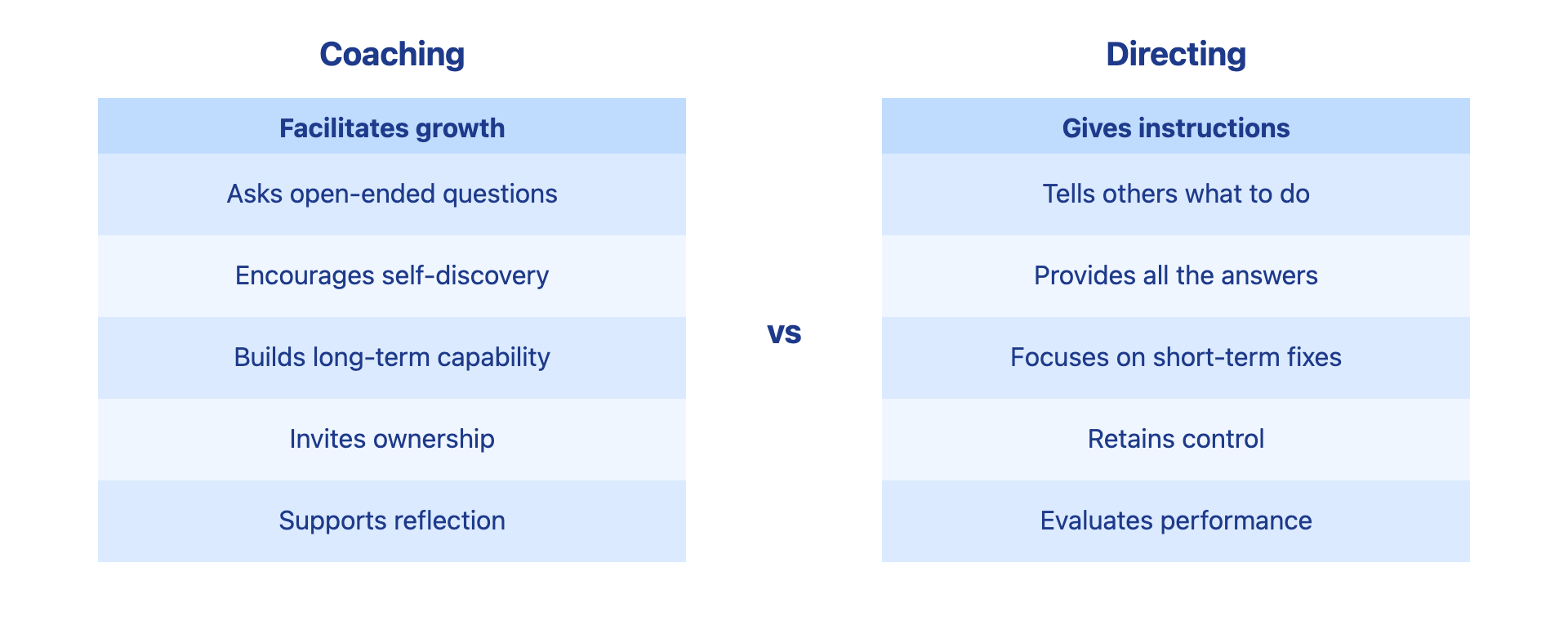Welcome to your journey in Building Your Coaching Mindset. In this unit, you’ll discover how to move beyond simply solving problems for your team and instead help them grow through coaching. You’ll explore the difference between coaching and directing, learn how to create a safe environment for open dialogue, and develop the ability to spot coaching opportunities in your daily work. By mastering these skills, you’ll foster a culture of trust, ownership, and continuous development—qualities that set great leaders apart.

Once you’ve built this foundation, you’ll be equipped to unlock your team’s potential and drive better results through people-centered leadership.
A key shift for any manager looking to act as a coach to their team is moving from a “fix-it” mindset to a developmental one. Instead of jumping in with solutions, a coach helps others find their own answers and learn from the process. For example, rather than saying "Here's what you should do to fix this", you might ask "What options have you considered so far?" This approach encourages critical thinking and ownership.
Heres an example of a dialogue exchange that shoes shifting from directing to coaching as a manager:
- Jessica: Hey Chris, I’m stuck on this report. I’m not sure how to organize the data, and I was hoping you could just tell me what to do.
- Chris: I get that it feels overwhelming. Before I jump in, what approaches have you already tried?
- Jessica: Well, I tried grouping the data by region, but it didn’t seem to tell the full story.
- Chris: That’s a solid start. What other ways could you look at the data that might highlight trends?
- Jessica: Maybe by product line? I hadn’t thought of that.
- Chris: Great idea. How confident do you feel about giving that a try?
- Jessica: I think I can do it. Thanks for helping me think it through.
In this exchange, Chris resists the urge to provide a direct solution and instead uses questions to guide Jessica’s thinking. Notice how Chris validates Jessica’s effort, encourages exploration, and creates a safe space for her to try new approaches. This is the essence of a coaching mindset.
Creating psychological safety is essential—when team members feel safe, they’re more likely to share ideas, ask for help, and take initiative. Even small actions, like listening without interrupting or saying "That's a great question—let's explore it together", can help build this trust.
Psychological safety means your team feels comfortable taking risks, asking questions, and admitting mistakes without fear of embarrassment or punishment. As a leader, you set the tone for this environment. So, how can you ensure your team feels supported? Consider the following:

Ways to Foster Psychological Safety:
- Be open about your own learning and mistakes (e.g.,
"I didn’t get this right the first time either"). - Invite curiosity with prompts like
"What else might we try here?" - Model transparency:
"If something doesn’t go as planned, let’s talk about what we can learn from it." - Listen actively and without judgment.
When psychological safety is present, your team will be more engaged, innovative, and willing to grow. This is the foundation for all effective coaching.
As you move forward, you’ll have the chance to apply these concepts in a role-play session, practicing how to coach through questions and create a safe, developmental space for your team.
